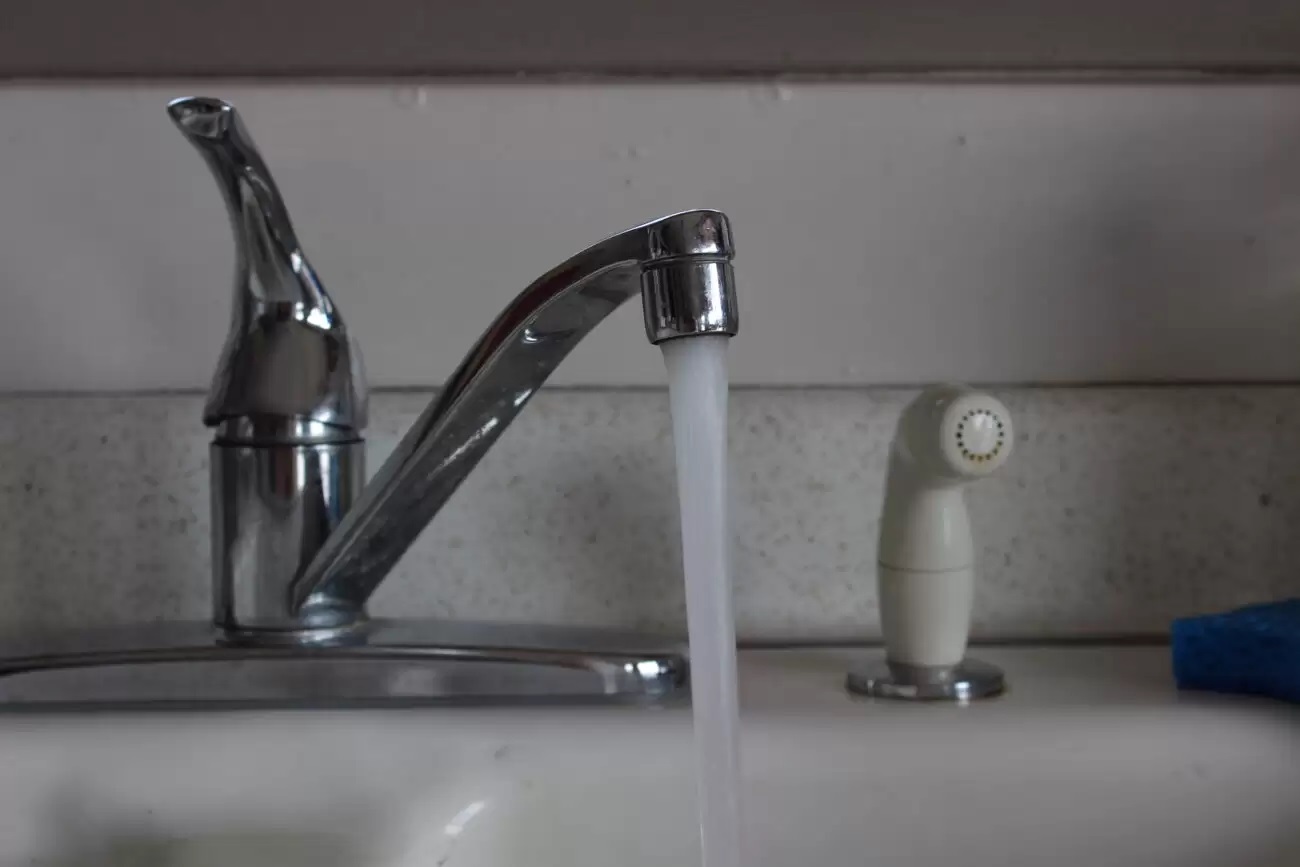
Wrangell’s government is urging residents to conserve water, after a dry few weeks have put a dent in the community’s reservoirs. Officials say the well hasn’t run dry yet, but they’re trying to be proactive.
Like the rest of Southeast Alaska, Wrangell residents live surrounded by North America’s largest temperate rainforest – the Tongass. But living in a rainforest doesn’t prevent all water issues.
So far this month, the Wrangell area is at about 70% of its normal rainfall, according to the National Weather Service in Juneau.
That dry spell and higher-than-average water consumption have left Wrangell teetering on the edge of implementing mandatory conservation measures. Wrangell has been using close to a million gallons of treated water per day in recent weeks, according to a report from the Public Works Department – pushing the drinking water treatment plant’s production capacity.
“We’ve had a dry couple of weeks,” Borough Manager Jeff Good told Wrangell’s assembly at a meeting July 25. “We’re four feet down on the lower reservoir. The upper reservoir is full, but no longer spilling. So they have started siphoning.”
Wrangell’s upper drinking water reservoir has a capacity of around 47 million gallons, while the lower reservoir has a capacity of around 21 million gallons. But some of that water is unusable because the pipes don’t come in at the very bottom.
Four feet of water loss in the lower reservoir represents around 6.5 million gallons less than typical levels.
Wrangell’s Public Works Director Tom Wetor estimates as of Monday that the community had just over two months’ worth of water, 57 million gallons, stored in the reservoirs – about 10 million gallons less than normal capacity.
So Wrangell officials are encouraging residents to voluntarily conserve water – take shorter showers, sweep driveways and sidewalks instead of hosing them off, and so on.
If the reservoirs continue to deplete, the town could implement its water emergency plan as early as next week, the first week of August. If the supply drops below 60 days’ worth, that kicks off the first stage of Wrangell’s water shortage management plan, which was adopted in 2017 in the wake of major community water shortages.
“We’ve been teetering on the edge of that for probably close to two weeks here now,” Wetor said Wednesday. “And we got a lot of rain last weekend with that little thunderstorm that rolled through. That helped. But we’re still starting to see the reservoir levels dropping.”
Wetor says water usage has been pushing the production limit of the plant, averaging 860,000 gallons per day.
“No matter what happens at the plant, no matter what happens with our water storage, it doesn’t matter what we do up there,” Wetor said. “The plant is only designed to produce 900,000 gallons a day.”
Since it came online, the plant’s capacity has been increased slightly to 1 million gallons per day. And the town can also store about a million gallons of treated water in its tanks – another day’s worth of water. Those two days are not a lot of wiggle room.
Wetor says part of the current water strain could come from the local Trident Seafoods processing plant, one of two local seafood processors. It’s running for the first time since 2019 – coincidentally, the last time the community implemented water conservation measures. During its two-month busy season, Wetor says Trident can use upwards of 2 million gallons of water.
But it’s part of a broader local problem. Wrangell has faced periodic water shortages for years. Some issues with the water supply have been tied back to the drinking water treatment plant itself.
“It’s a sand filter, it’s based on gravity,” Wetor said. “You can only put so much water in, and the weight and the pressure from that water is only going to push through those slow sand filters so fast. So that’s where our biggest limitation comes in.”
The community is in the process of developing a new water treatment plant, which is expected to be able to produce 2.3 million gallons per day – more than double the current capacity.
“If we develop the Alder Top (Village) subdivision or the (6-Mile) Mill property, or the community grows in any kind of way, we need to be planning for the future and 20 years down the road,” Wetor said.
But better output at Wrangell’s water plant won’t solve the other water-related issue – storage capacity. The reservoirs can only hold around 68 days worth of water, and the earthen dams holding back Wrangell’s drinking water are a century old, and some of the most unstable dams in the state according to the Department of Natural Resources.
“For us to fix our dams, you’re talking tens of millions of dollars for us to stabilize or increase storage capacity up there,” Wetor said. “That is a massive, major project.”
Wetor says the water shortage is not an emergency yet, and there’s hope on the horizon with the end of summer approaching and a slowing of the salmon season.
“We’ve got about a month left with canneries being in full tilt, we still have just over sixty days worth of water,” Wetor said.
But Wrangell officials are still encouraging conservation.
“At the end of the day, we’re just trying to be proactive,” Wetor said. “We’re in good shape right now. But we’re just wanting to keep an eye on it and make sure that we keep the town in good water supply.”
Those 60 days of water supply are important. The National Weather Service in Juneau said Wednesday that the dry weather will likely continue in Wrangell for the next week, with isolated rain showers possible.
Get in touch with KSTK at news@kstk.org or (907) 874-2345.




